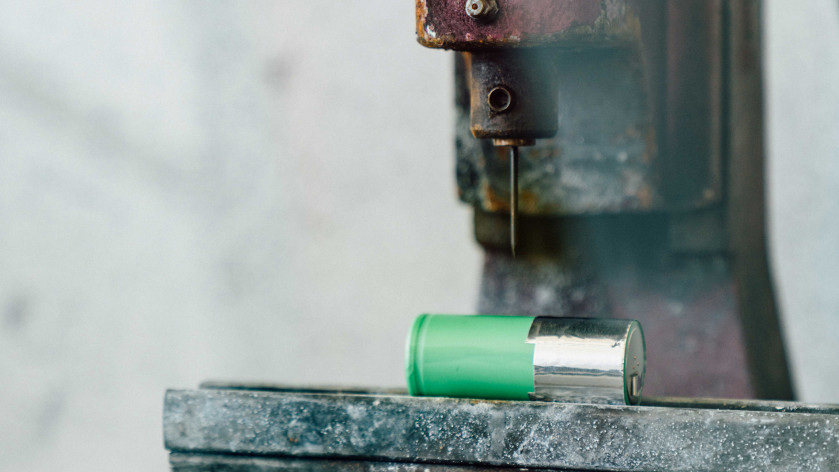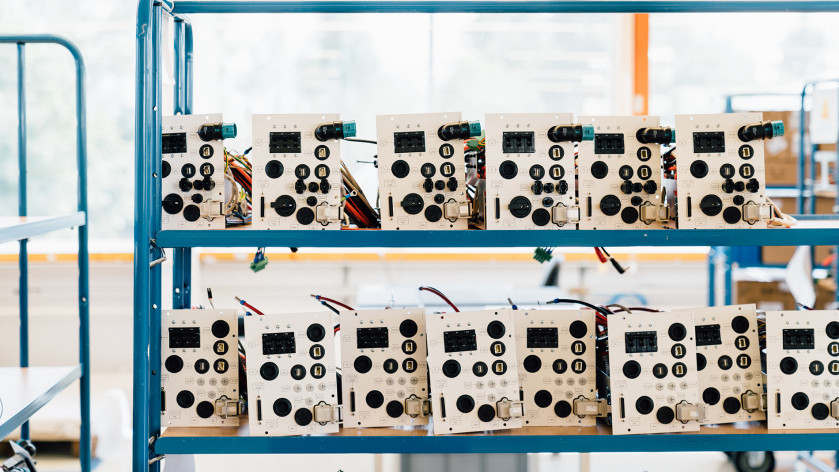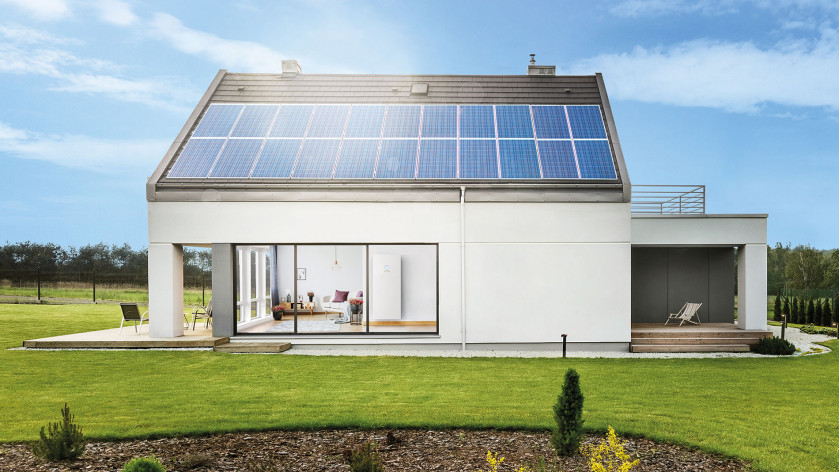
Solar battery efficiency and conversion losses explained
How much energy does my (photovoltaic) PV system produce? How much of it ends up in my sonnenBatterie? And, how much of this can I actually use? As a sonnenBatterie owner, you’ve certainly asked yourself these questions. You can find answers at any time in your sonnen App. But how can the differences between the energy produced and the energy available — conversion losses — be explained? And what are the standard efficiency values for battery storage systems on the market? We’ll explain all of this in the following article!
What are conversion losses?
When sunlight hits the solar cells of your PV system, electricity flows, and the electrons make their way from your roof to your electricity storage unit. They carry the energy from the sun with them.
However, they have to overcome numerous obstacles on the way. They pass through cables, electrical components (such as inverters), and finally through the batteries of your storage system. At each obstacle or resistance, they release a small amount of their energy – this is when conversion losses occur, similar to the way people lose energy when overcoming obstacles. In an electrical circuit electrical energy is converted into thermal energy. This is why electrical appliances heat up after a while.
What does efficiency describe?
Efficiency shows how much electrical energy is converted into heat on the journey from the source to the target. If the efficiency is 80 per cent, 80 per cent of the original electrical energy reaches its destination. In this case, 20 per cent of the electrical energy is referred to as power loss.
The classic light bulb exemplifies how high this power loss can be. An incandescent light bulb can have an efficiency of as low as five per cent. Here, the bulb only converts five per cent of the original electrical energy into light, the rest is converted into heat. LED bulbs, on the other hand, achieve efficiencies of 30 to 40 per cent and are therefore six to eight times more efficient than incandescent bulbs.
How does efficiency impact the development of electrical appliances and electricity storage systems?
From a physical perspective, there can be no such thing as 100 per cent efficiency, as minimal conversion losses always occur. Therefore, the aim of increasing the efficiency of technical devices is to achieve the highest possible efficiency and minimise avoidable losses as much as possible. This is something that we at sonnen achieve with our batteries, which have a high efficiency rate.
Solar panel inverters, for example, which convert the direct current (DC) of solar modules into alternating current (AC) now achieve efficiencies of between 96 and 98 per cent.
High efficiency is a key factor in the development of electrical appliances, though it’s not the only one. Quality, safety, availability in large quantities, and cost are also considered.
For example, the fuel consumption of a car per 100 kilometres is an important parameter, but this alone does not allow any fundamental statement to be made about the quality of other properties of the car.
A very high level of efficiency can lead to significantly higher costs because the necessary components are extremely expensive or in short supply. Here, a car manufacturer will weigh up which route they want to take, higher efficiency or lower cost.
The same consideration applies to battery storage systems, which also differ in efficiency. A comparison between different manufacturers should be exercised with caution, as the basis for calculating the information in data sheets can vary considerably. In turn, this makes a neutral comparison between different manufacturers difficult.
This is where independent electricity storage inspection comes in, such as those done by ITP’s Battery Test Centre in Australia.
The efficiency of the sonnenBatterie
Our sonnen customers can view a transparent visualisation of their energy consumption data at any time in the sonnen App. This also includes the efficiency of their sonnenBatterie. To do this, the value of the total discharge can be divided by the value of the total charge.
It is important to use the annual value here, as a complete picture can only be obtained by looking at a whole year. Only then are annual effects or different utilisation patterns balanced out. In practice, these values vary from household to household.
As an exemplary use case, we assume an efficiency of between 75 and 80 per cent, which frequently occurs. This is the actual value for the entire storage system and not the best values or the values of individual components.
Read more about the technology behind our sonnenBatterie here.
How are conversion losses calculated?
In this section, we’ll cover the three most important factors concerning conversion losses at a glance.
In our example, the efficiency of the sonnenBatterie is approximately 75 to 80 per cent. What is behind the power loss of around 20 to 25 per cent? Remember, the electrons have to cross many obstacles before they reach the batteries.
1. The path through the sonnenBatterie
The efficiency mentioned here starts with the inverter of the sonnenBatterie - in other words, where the alternating current from the PV inverter is converted into direct current.
It then passes through the inverter to the batteries themselves, where the electrical energy is converted into chemical energy. When discharging, it goes back the same way.
Chemical energy in the batteries is converted into electrical energy and this flows through the inverter back into the domestic grid. Without taking into account the resistances in the cables, the electrons have to overcome two components during storage and discharge, both there and back, where they naturally release energy.
Let's take a look at this using an example calculation.
Assuming the inverter has an efficiency of 96 per cent for charging and discharging and the batteries have the same, the calculation is as follows:
0.96 (inverter charging)
* 0.96 (storage losses in battery)
* 0.96 (inverter discharging)
= 88,5 %
This is more than the 75 to 80 per cent we see in our example. We’ll look at why this is, in the following points.
2. Real conditions
In addition to the conversion losses of the inverter, other factors influence the calculation. The values given for efficiency in the point above are best values and not average values. Such optimum conditions are not always achieved in practice.
The temperature or the level of output plays a role here. Many inverters work most efficiently when they have to deliver high power, roughly in the power range between 50 and 100 per cent.
In the case of the sonnenBatterie 10, this range would be between 2.3 kW and 4.6 kW. However, there are times when the sonnenBatterie is charged with less power, for example, because the PV yield is lower in winter.
If the sonnenBatterie is only charged with 800 watts, for example, the efficiency is lower than 96 per cent. High outputs are not always necessary for consumption either; outputs of a few hundred watts are common, especially at night. Efficiency is also reduced at such lower outputs.
If we take into account the not-always-optimal range with lower outputs, our calculation could look something like this:
0.93 (inverter charging)
* 0.96 (storage losses in battery)
* 0.93 (inverter discharging)
= 83 %
3. Self-consumption
We are still a small step away from the efficiency of 75 to 80 per cent from our example case. This is because one variable is still missing from the analysis: the self-consumption of the storage system.
The sonnenBatterie also needs the energy to provide data for the app, for the lighting of our sonnen Eclipse, or possibly to ready itself for the virtual power plant. For the sonnenBatterie 10 this is around 15 watts and for the sonnenBatterie 10 performance around 35 watts, which is within the normal market range.
Over a complete year, the self-consumption of the sonnenBatterie 10 is calculated as follows, for example: 15W * 24h * 365 = 131 kWh.
A further step in our example calculation: Assuming that 2,000 kWh flows into the storage system per year and the efficiency is 83 per cent as above. This means 340 kWh conversion losses and 131 kWh losses due to self-consumption. The energy available from the storage system minus the losses is then 2,000 - 340 - 131 = 1,529 kWh.
In other words, the efficiency in this year is around 76.5 per cent.
Efficiency is not always decisive
In principle, a higher degree of efficiency is desirable, as less energy is lost on the way. But it's not quite that simple. The following thought experiment clearly shows that greater efficiency does not necessarily mean more available energy:
- Power storage with less power
Let's assume that the inverter of the storage system is slightly smaller so that the house consumption, which rarely has high power peaks, runs as often as possible at optimum efficiency. The storage system's inverter therefore frequently runs with a high load and therefore close to the optimum range.
However, in winter the sun often only shines in a small time window of around two to three hours a day. The somewhat undersized inverter is then unable to absorb the full energy of the PV system. Solar power is therefore fed into the grid instead of the battery.
- Power storage with high output
If the inverter is larger, it can transport more energy into the storage system at once and also make better use of short periods of sunshine. The system would then be less efficient overall, but the household would have a full electricity storage system more quickly.
The choice of energy storage system and inverter is therefore not a question of right or wrong, but which priorities you want to set for your own energy budget. Installers are happy to help you assess such questions and find exactly the right solution for your individual needs.
Our team of experts is constantly working on optimising our products. This also includes the efficiency of the sonnenBatterie, which we are constantly increasing in conjunction with other parameters such as quality, economic factors, and ease of installation. We use the latest cutting-edge technology, made in Germany.
Since the start of production of our sonnenBatterie, we have worked tirelessly to provide our customers with an extremely safe and durable electricity storage system. This is precisely why we rely on lithium iron phosphate technology. Thanks to our many years of experience and over 125,000 installed solar battery systems, we know exactly what is important.
Conclusion
We can therefore conclude that how much of the solar energy produced from the roof ends up in the sonnenBatterie and how much of it is available for daily use depends on various factors. Not only the actual efficiency, but also the performance of the electricity storage system and its own consumption play an important role.
The extent of this influence can vary from household to household. Technical data sheets show the optimum state, which the devices can usually only achieve in theory - because individual circumstances can hardly be predicted and summarised in general terms.
At sonnen, we give all our customers full transparency about their consumption data. Together with our certified specialist partners, we also provide you with comprehensive advice before, during, and after installation to find the best and most efficient solution for you so you can always rest assured that you are in good hands.









